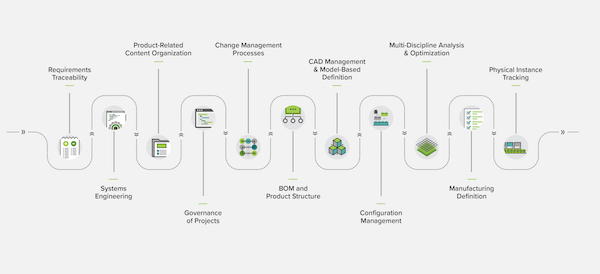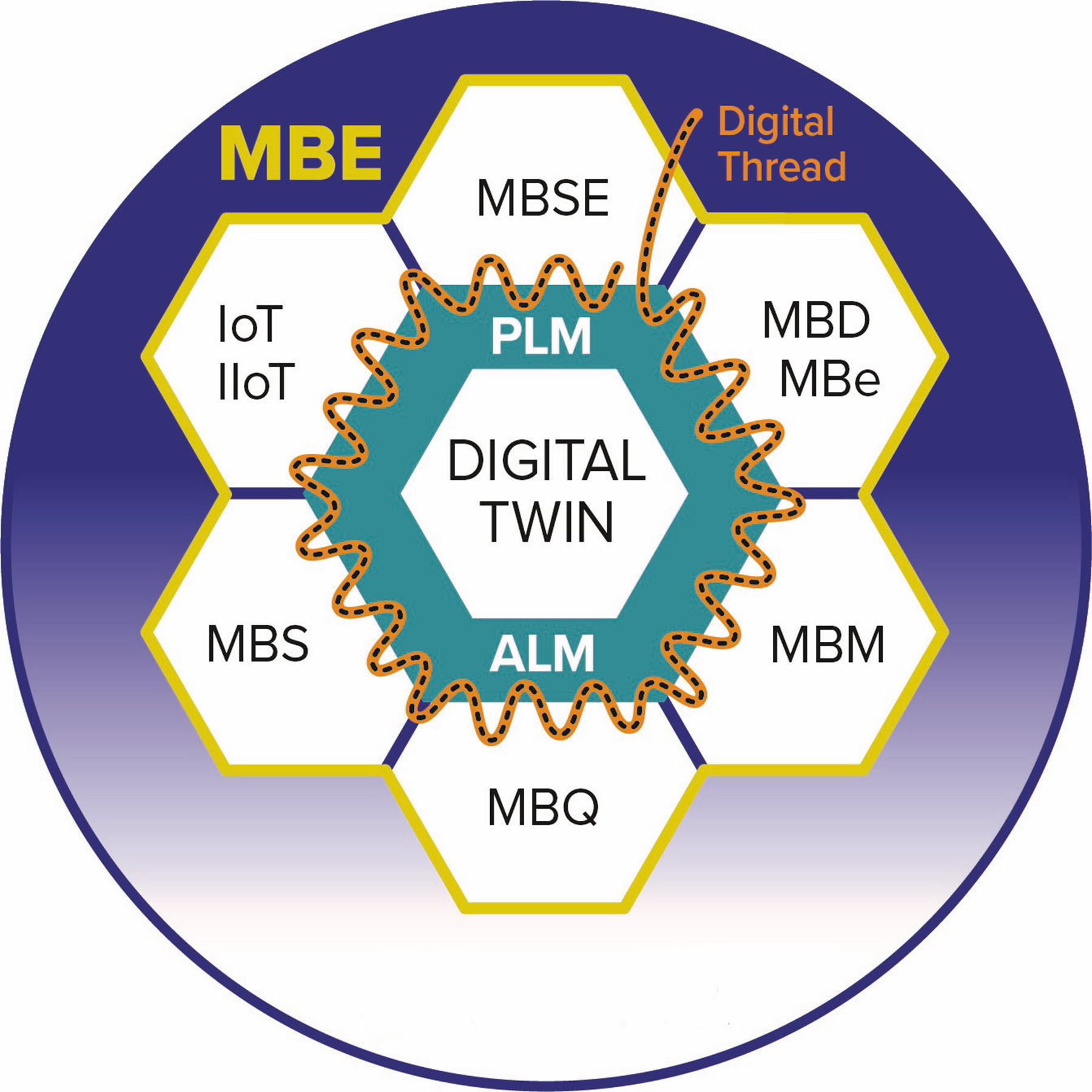Roadmap Holds the Key to Maximizing PLM’s Value
A successful PLM strategy requires a clear picture of how to optimize the technology to achieve real enterprise value.

The digital twin is the current representation of a product or system; the digital thread (above) is a record of that product’s or system’s entire lifetime. The digital thread contextually captures the details and rationale for products and systems, and how those produces/systems are produced, maintained, and retired. Image courtesy Razorleaf Corporation.
Latest News
March 24, 2020
Guest Commentary by Derek Neiding, Engagement Director, Razorleaf
It’s easy to see why Product Lifecycle Management (PLM) often gets dinged for being one of the more amorphous technology strategies. For one thing, PLM constitutes different things for different companies, depending on size, industry, and scope. At the same time, PLM platforms span such diversity of terrain, it’s hard for companies to pinpoint exactly where to start let alone be prescient enough to envision their ultimate destination.
The upside to the shape-shifting nature of PLM is that it’s flexible enough to accommodate any workflow and be tailored to meet the needs of most organizations. But without a clear picture of how to optimize PLM to achieve real enterprise value, too many companies, overwhelmed by the complexity, either opt out or embark on PLM projects only to hit the brakes when the project stalls or does not provide the value hoped for. A roadmap, customized specifically to meet an organization’s requirements and business objectives, is the best way to guide a PLM journey and ensure optimal value from investments.
In reality, most product-centered companies are already practicing some form of PLM, even if they don’t call it that or they haven’t yet purchased any technology to automate processes. Whether done through a homegrown system or manual processes using paper, pen, and clipboards, organizations are keeping track of engineering changes and monitoring product quality. Companies generally start to think about PLM when those processes become too cumbersome, in the event of a quality issue or recall, or when they hit a growth spurt and require more effective ways of enforcing consistent processes.
PLM fits the bill because it promises to centralize product-related data and automate and standardize processes, accelerating time to market, minimizing quality and compliance issues, and keeping all relevant stakeholders on the same page. What organizations miss, however, is they can easily box themselves in with a PLM implementation that doesn’t account for longer-term strategies and yet-to-be-determined business goals.
Caution: Rough Road Ahead
Without a clear roadmap that defines short- and long-term business objectives along with key milestones, organizations are bound to face obstacles that risk derailing PLM efforts. One of the most common unintended consequences is deploying the platform to automate existing workflows, which often replicates ineffective processes and ultimately undermines the value of PLM. Moreover, without a clear understanding of how PLM can be applied to solve challenges beyond an initial use case, organizations can end up with a system that will quickly run out of steam or isn’t well matched for future initiatives.

Finally, without accounting for the strengths and weaknesses of PLM platform vendors, it’s easy to choose an offering that is ill-suited to a company’s particular industry or potential PLM use case. Many companies assume that all PLM systems are created equal, but that’s not the case. Consider the analogy of choosing between F-150 truck or a Peterbilt tractor tailor—they have similarities but the pick-up works best for moving household items and contracting work, yet it’s sorely underpowered to do a long-haul transport for commercial equipment.
It’s the similar story with PLM. The solutions have have similarities, but your goals might take you in a particular direction. If the use case is a system that’s tuned to handle highly sophisticated 3D models, then a PLM platform from a company like Dassault Systèmes might work best. If the business objective is tied to the Internet of Things (IoT), Siemens Digital Industries Software or PTC have compelling stories, while a solution like Aras Innovator might make better sense if the goal is a flexible PLM system to house data from multiple disciplines. The point is without proper knowledge of a PLM platform’s capability set, companies can easily veer off in a direction that might negatively impact the upside to PLM deployments.
Road Trip with the Right Partner
The right integration partner can serve as a co-pilot on the PLM journey, helping enterprises develop a roadmap and avoid getting short-changed on PLM’s benefits. System integrators with combined knowledge of the PLM space and a particular industry focus are instrumental in identifying the right platform that can scale to meet changing business needs. In addition, experts in the field are more likely to be familiar with emerging trends like model-based engineering and digital twins, thus can help organizations factor those important considerations into both vendor selection and a longer-term PLM strategy.

Trained PLM experts can also push an organization to look beyond the initial use case—for example, automating the engineering change order process—and consider other ways to exploit PLM’s capabilities for competitive advantage. Because third-party experts are not intimately tied to a specific workflow or have a vested interest in a particular process, they are better able to see the forest through the trees and can identify the right places to jump start PLM implementations. They also have clarity into what systems are good candidates for integration with PLM as part of a long-term plan that hits specific business objectives. For instance, manufacturers building complex products likely want to develop a roadmap that syncs PLM with their Manufacturing Execution Systems (MES) to drive quality initiatives while others might want to build a roadmap centered on the Internet of Things (IoT) to drive future predictive maintenance applications.
Given the complexities of PLM and the range of what’s possible, it’s impractical to think companies with limited experience and exposure to PLM can navigate this territory on their own. With a roadmap and guidance from a third-party partner, organizations have a better shot at moving beyond basic PLM to strategic initiatives that deliver next-level opportunity and competitive advantage.
Derek Neiding is the Engagement Director at Razorleaf.
More Razorleaf Coverage
Subscribe to our FREE magazine, FREE email newsletters or both!
Latest News






